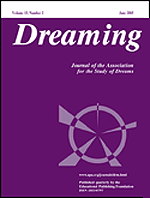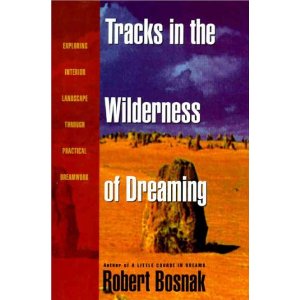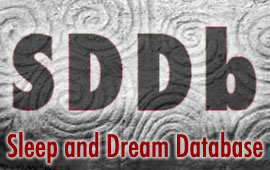 Why is it so hard to remember dreams? Scientific evidence dating back to the 1950’s has shown the brain is active in various ways throughout the sleep cycle. Yet when we wake up we often can’t remember more than a few fleeting images that disappear from our minds almost immediately. Why can’t we recall more of what we experienced while asleep?
Why is it so hard to remember dreams? Scientific evidence dating back to the 1950’s has shown the brain is active in various ways throughout the sleep cycle. Yet when we wake up we often can’t remember more than a few fleeting images that disappear from our minds almost immediately. Why can’t we recall more of what we experienced while asleep?
As a partial answer to that question, try this thought experiment. Imagine you are a star basketball player. It’s the final moments of a championship game. The score is tied, the crowd is screaming, and victory hangs in the balance. Just before time expires you make a brilliant play that wins the game.
Then, the second the game’s over, a reporter pulls you off the court, thrusts a microphone in your face, and says, “What was going through your mind when you made that play?”
As with most athletes facing this situation, you’d probably be at a loss for words. You’d find it difficult if not impossible to communicate the full experience of what it felt like while you were in the game. So soon after the game’s end, your brain would still be somewhat disoriented by the abrupt transition, and it would be a challenge to form a linear, grammatically proper thought.
This is more or less what it’s like when we wake up in the morning. Our brain has just been operating in a very different mode from waking consciousness. It’s extremely difficult to convey the experiences of the former state of awareness into the linguistic terms of the latter.
That’s a general reason for the limits of our dream recall. But still, a question remains: Why do some people remember several dreams every night, while others remember virtually none at all? Sometimes I hear this posed as a challenge—“I don’t remember any of my dreams and I’m just fine, so what’s the point of paying attention to them?” Other times it’s more of a request for advice—“I know dreams are valuable, but I barely remember any of them, so how can I improve my recall?”
Current scientific research suggests that some degree of dream recall is a normal part of human life. According to Michael Schredl’s thorough review of the research literature in The New Science of Dreaming:
“On average, students recall one to two dreams per week at home… In representative samples of the general population [in Austria], dream recall frequency is slightly lower, but about 68% recall at least one dream per month.” (1)
Similar results appeared in a demographic survey of 2970 American adults I commissioned in 2010, when 67.81% of the participants said they recalled at least two or three dreams per month.
A very small percentage of people say they remember no dreams whatsoever. The only research I know that has directly focused on “non-dreamers” was done by James Pagel from the Rocky Mountain Sleep Clinic in Colorado. Pagel found that 6% of his lab’s incoming patients said they never remembered any dreams. After further questions and experiments, Pagel found that most of these people could remember at least a few dreams from earlier in life. He concluded that “true non-dreaming was very rare in our sleep lab population (0.38%)—1 of every 262 patients.” (2)
It’s not clear why some people remember an extremely high number of dreams. Gender may have something to do with it, since females tend to remember more dreams than males. The difference is not absolute—there are high-recalling men and low-recalling women—but many researchers have found the same modest difference. In the 2010 demographic survey, 10.21% of the women vs. 6.64% of the men said they remembered a dream almost every morning.
Age is also a factor, as children and young adults tend to remember more dreams than do older people. This pattern seems to be more pronounced among women than men: Young women have the highest frequencies of dream recall, with a big drop-off for older women, while young men have only slightly more recall than older men.
Many other factors can influence an individual’s dream recall frequency, including sleep quality, medications (some increase dream recall, others decrease it), and stressful circumstances in waking life.
The most intriguing factor is encouragement by others. Michael Schredl refers to this as an “experimenter effect,” in which
“[T]he expectations of the participants and the expectations of the experimenter can affect DRF [dream recall frequency] as measured in the sleep laboratory. In the high expectancy conditions [of one study], dreams were recalled more often. Similarly, other studies have demonstrated how sensitive DRF is to comments of the experimenter; simple encouraging comments produced a marked increase in DRF. Even the completion of a short dream questionnaire yielded a higher DRF after four weeks.” (3)
It seems the mere act of encouraging people to remember more dreams leads to an increase in recall frequency. This isn’t just a function of compliant participants trying to please their experimenters. It’s an indication that dream recall depends to a large degree on a person’s conscious attitude towards dreams. A low interest in dreams correlates with low recall, and high interest in dreams correlates with high recall. As the research reviewed by Schredl shows, even a slight positive change in attitude can yield a higher frequency of remembered dreams.
If you build it, they will come.
####
Notes:
1. Michael Schredl, “Dream Recall,” in Patrick McNamara and Deirdre Barrett (ed.s) The New Science of Dreams (Westport, CT: Praeger, 2007), vol. II, p. 80.
2. J.F. Pagel, The Limits of Dream: A Scientific Exploration of the Mind/Brain Interface (London: Academic Press, 2008), p. 152.
3. Schredl 2007, p. 89.





